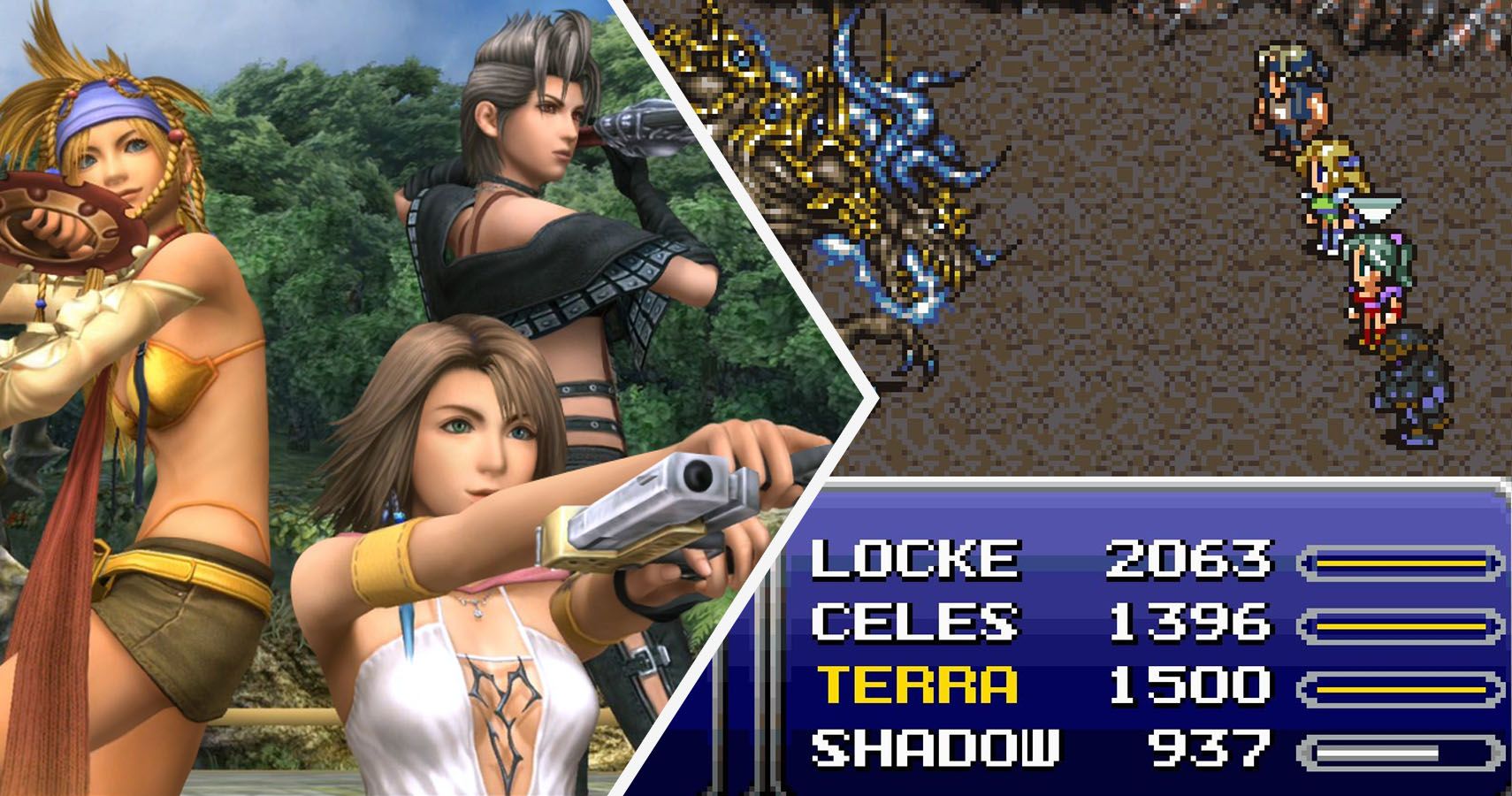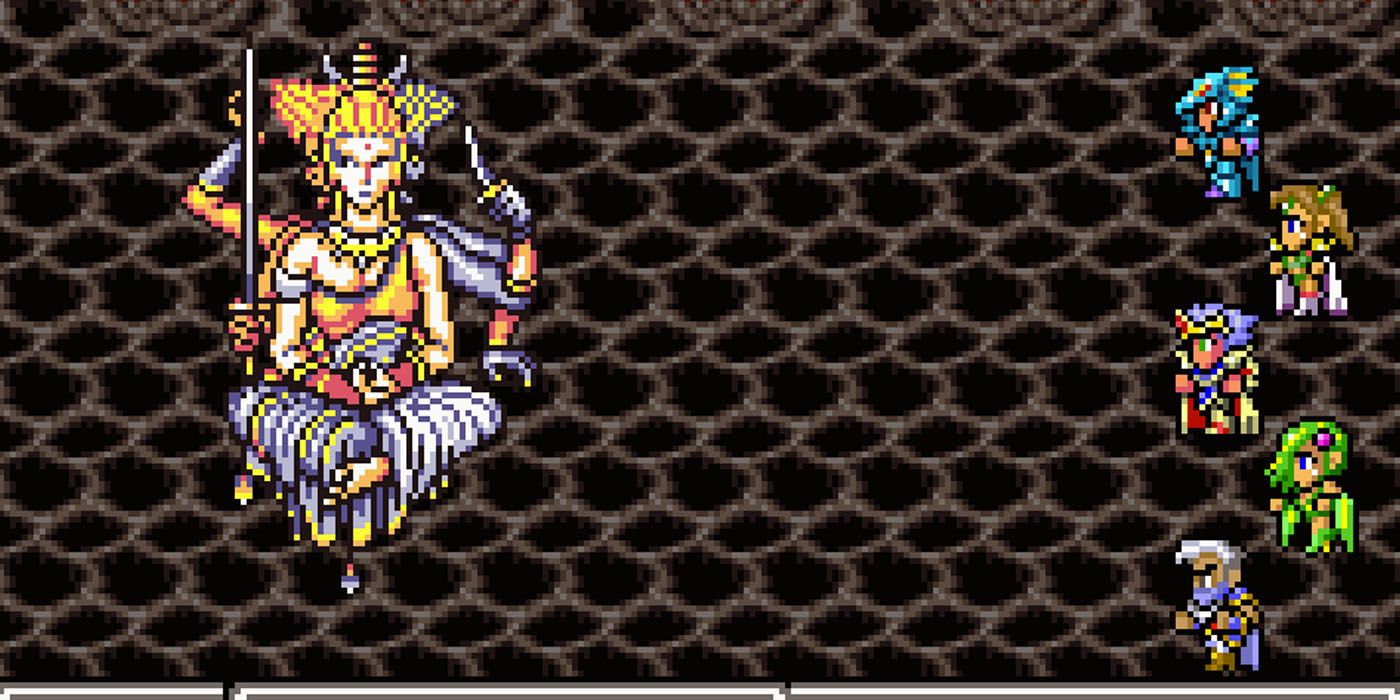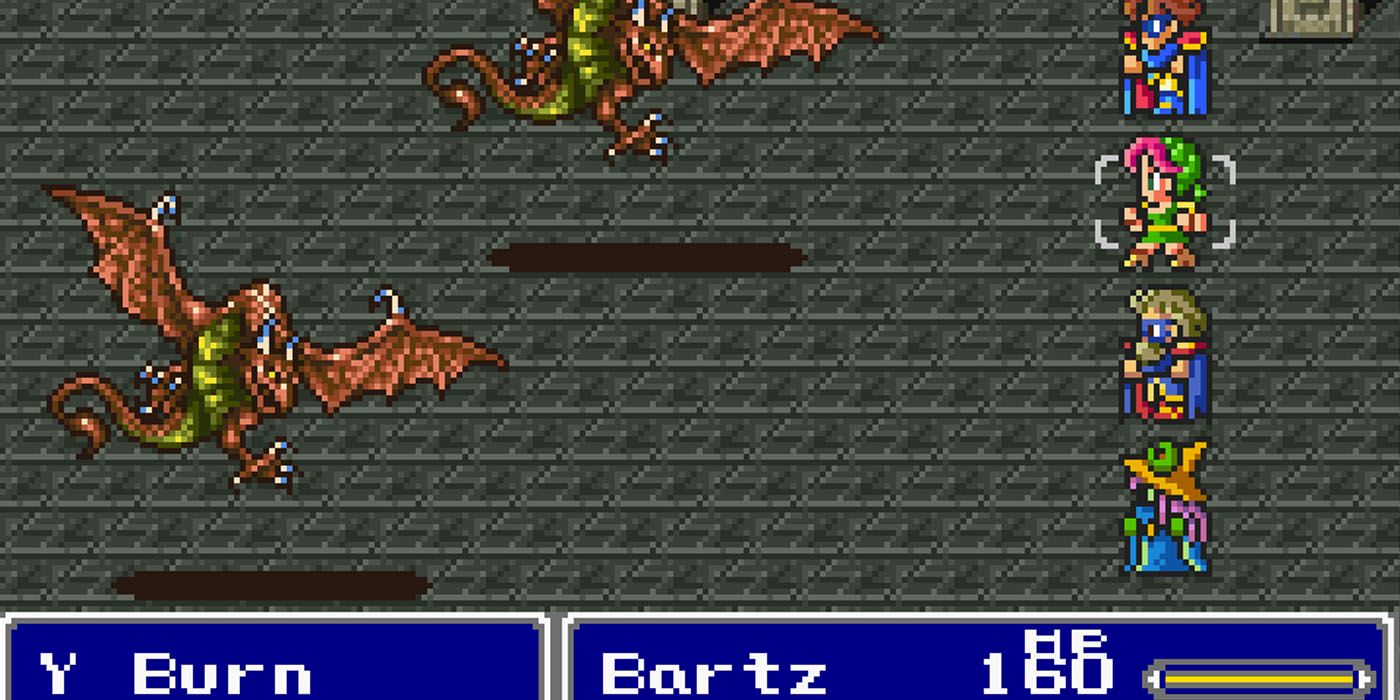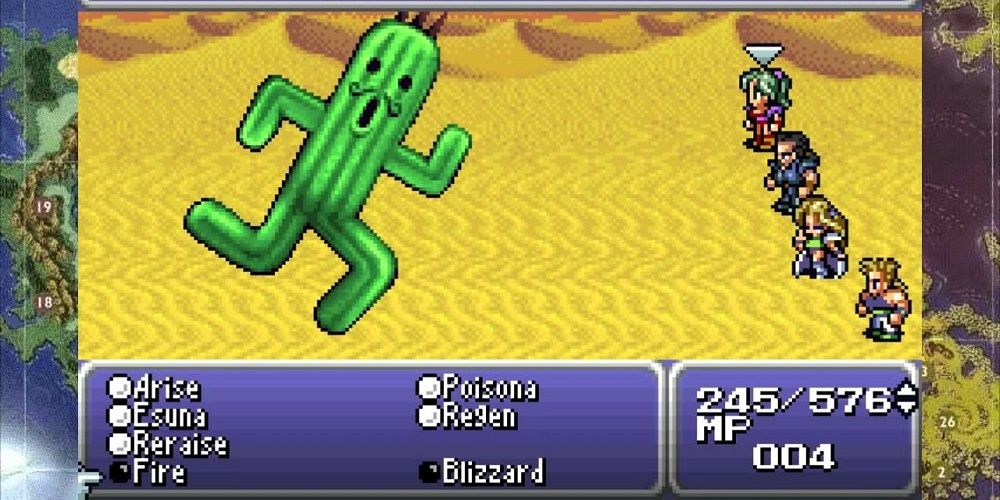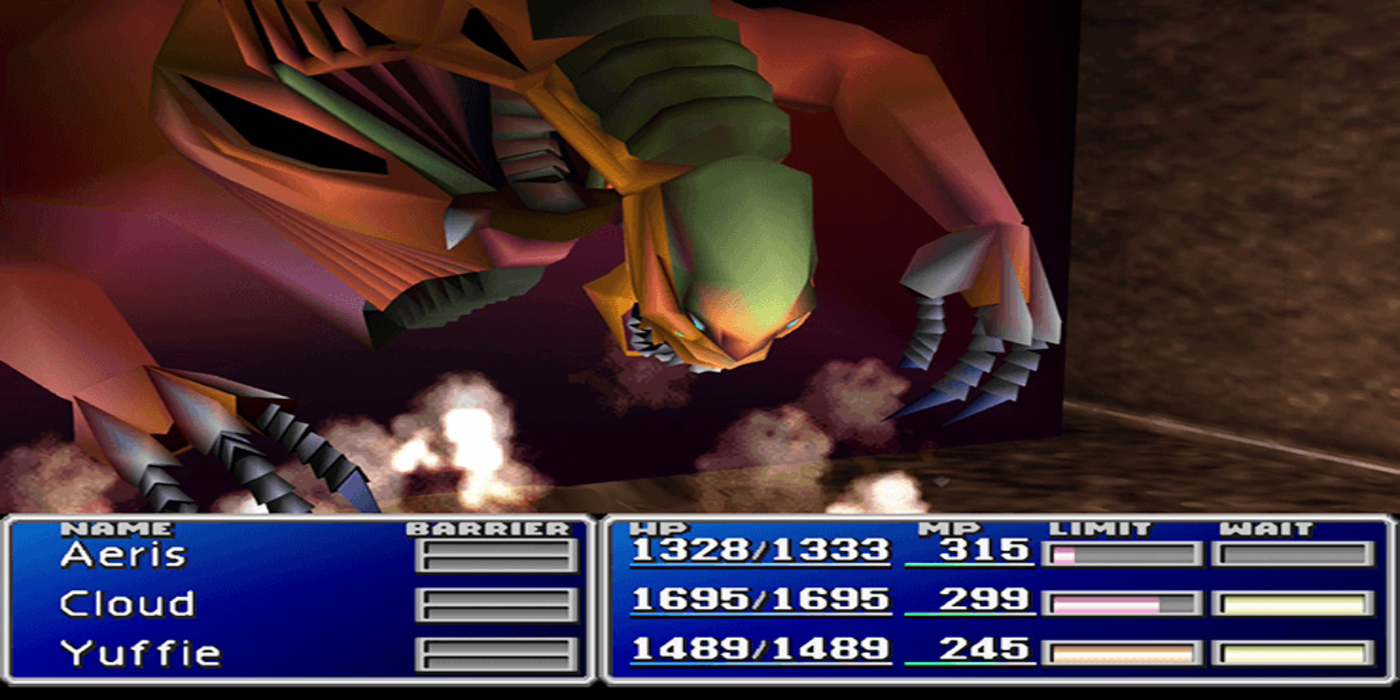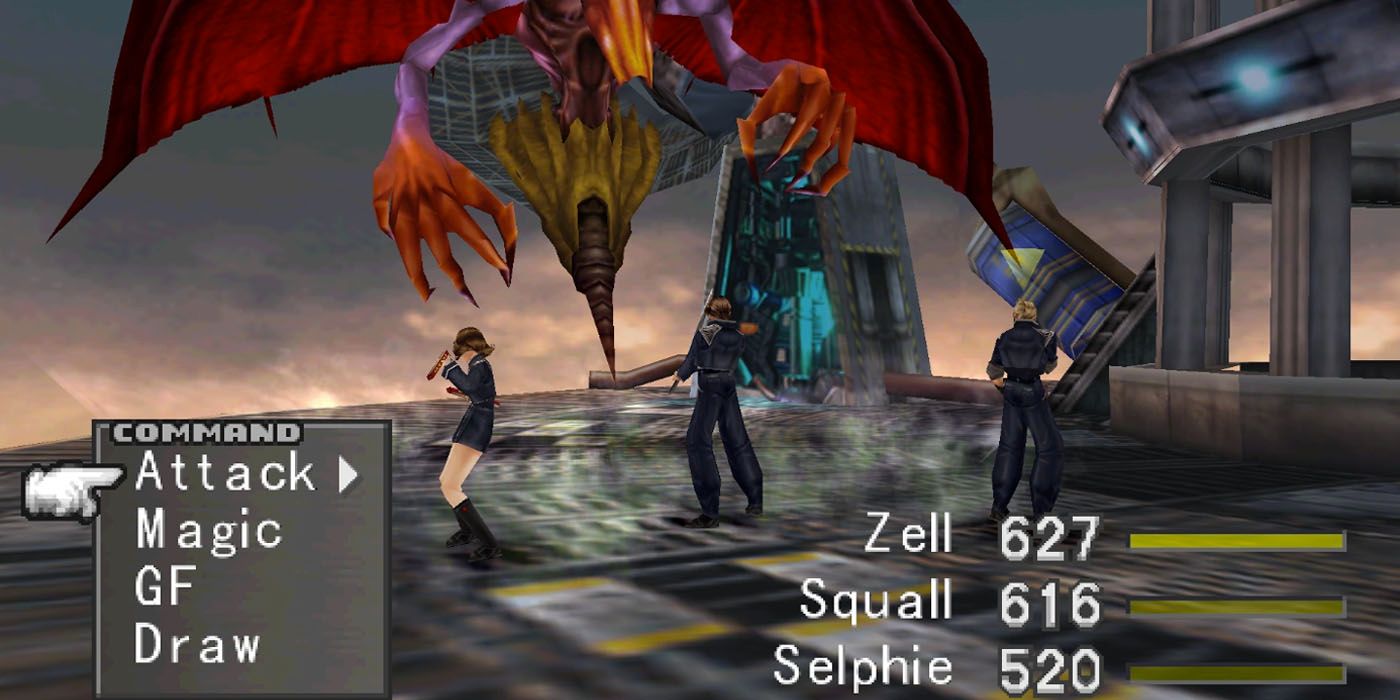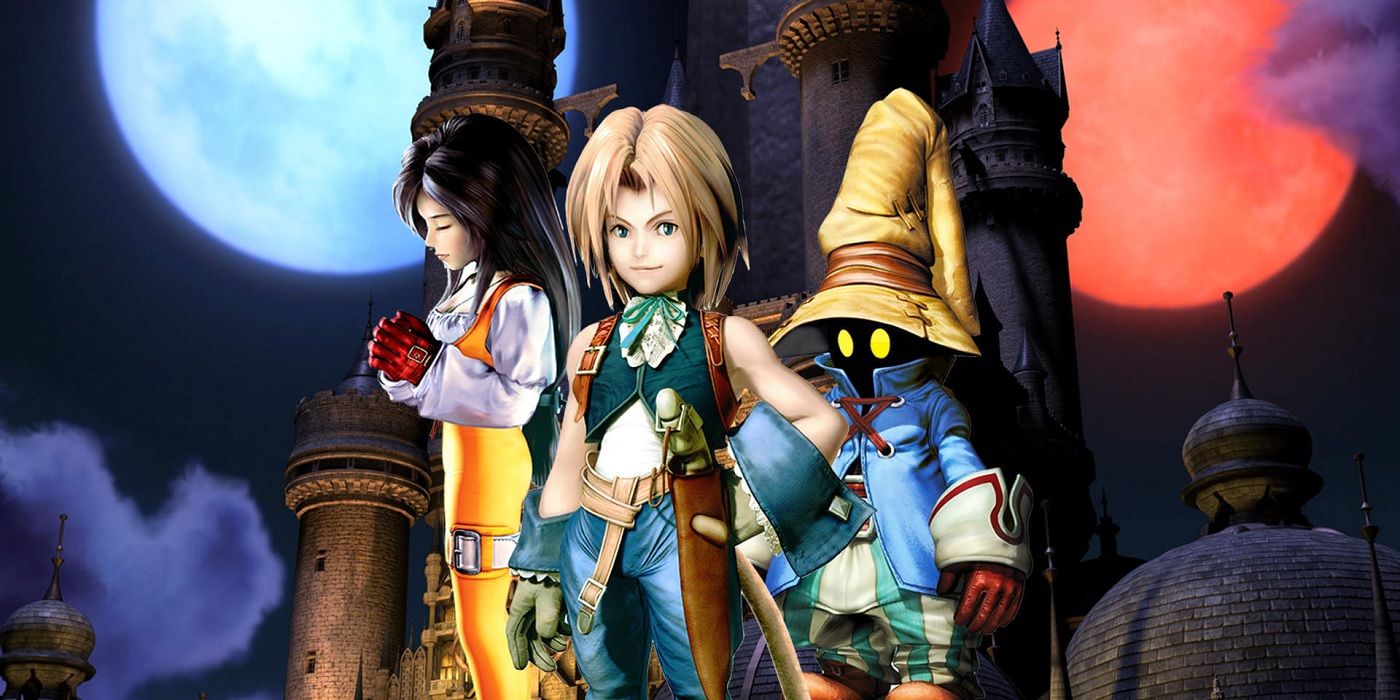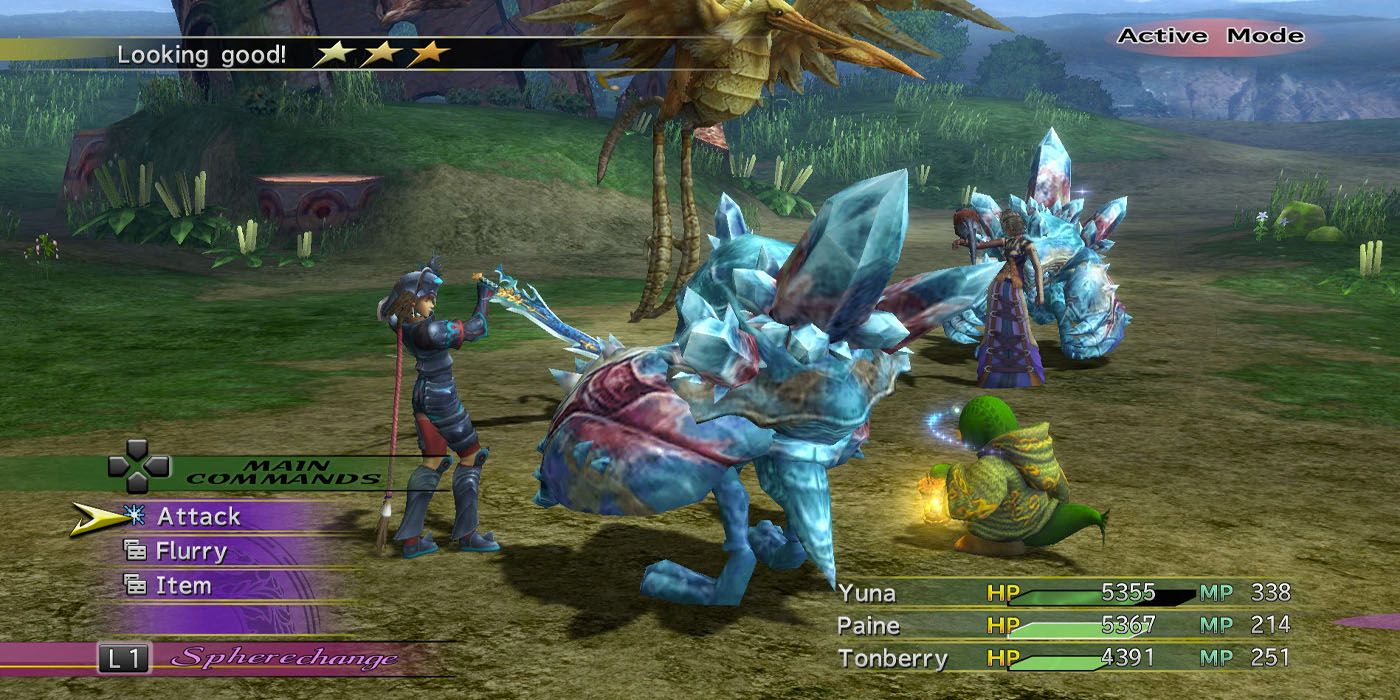The Action Time Battle system, henceforth referred to as ATB, was a game changer unlike any other for the JRPG genre. Developed by Square for Final Fantasy IV, ATB added a layer of real-time strategy to turn-based combat. Instead of having all the time in the world to plan out a next move, players had to now make snappy decisions on the fly. Knowing your way around a menu became a skill in & of itself, along with energizing the Final Fantasy series as it made its transition into 16-bit.
More importantly, the ATB was used as a means to vary up moment to moment gameplay. Not every character moved at the same speed, after all, which often meant players’ attacks were staggered throughout battles. Just as crucial, enemies & players were no longer broken down into structured “turns,” simply acting once their ATB dictated they could. ATB reshaped the Final Fantasy franchise & the RPG genre, and while time has since moved on, ATB is still one of the series’ best battle systems.
7 Final Fantasy IV
When looking at the original Super Nintendo release (localized Final Fantasy II in North America,) it’s easy to wonder what benefit Final Fantasy IV’s ATB brings to the table. Between the lack of the now iconic ATB bar and fairly slow enemy speeds, FFIV doesn’t force players to engage with their reflexes all that much– at least not until much later in the game.
ATB in the context of Final Fantasy IV is more style than substance, a means of adding some sense of inherent tension to combat (even in light of a lowered difficulty curve.) While the presentation is a bit off, ATB does keep the action fast & frantic which in turn keeps the game engaging even at its most mechanically vapid.
It’s also worth pointing out that Final Fantasy IV’s main gimmick isn’t the ATB. Rather, it’s a mix of its epic storytelling and fixed character classes. There’s no party consistency until the end of the game, which is what ultimately drives the gameplay forward. ATB was still window dressing in Final Fantasy IV.
6 Final Fantasy V
Final Fantasy V has since been released internationally, but it always stood out as the strange gap between Final Fantasy IV and VI’s North American releases. For whatever reason, Final Fantasy V was skipped over and Final Fantasy VI was localized as Final Fantasy III. It’s quite a pity as Final Fantasy V is an improvement in just about every respect.
Players will immediately notice that the ATB is no longer running in the background, visualized by a meter in the menu during battles. This allows players to actually pace themselves as far as reflex & thoughtwork goes. Little has changed mechanically, but it’s important to recognize how something as simple as clear presentation can bolster an experience.
With an improved ATB, Final Fantasy V makes excellent use of the returning Job system. Revamped from Final Fantasy III, Final Fantasy V offers a level of character customization that isn’t found in other Super Famicom RPGs (save Dragon Quest III.) Jobs are the star of the show, but the ATB helps them shine.
5 Final Fantasy VI
One of the finest RPGs on the Super Nintendo, Final Fantasy VI combines dramatic storytelling with an incredibly exploitable character customization system to make one of the most memorable games in the franchise. Unfortunately, the difficulty curve is lowered considerably coming off of Final Fantasy V.
While there are some tough fights that make good use of ATB, Final Fantasy VI is a bit too easy for its own good. That said, it takes a page from Final Fantasy IV’s book by shuffling up party variety– albeit on a much grander scale. The ATB shines in Final Fantasy VI if only because players get to experience firsthand just how differently all 14 party members play as.
4 Final Fantasy VII
The original Final Fantasy VII is nothing short of a masterpiece, even if it is on the easier side. That said, it isn’t nearly as simple as either Final Fantasy IV or VI, featuring multiple chokepoints, a solid difficulty curve, and some genuinely challenging superbosses. The ATB is also more aggressive even if enemies aren’t the hardest hitters.
Of the games up to this point, Final Fantasy VII makes the best use out of ATB. Character speeds are fully defined, bosses get multiple turns that players need to strategize around, and knowing where everything is in the menu is critical (especially since the Materia system will add & remove new commands over the course of the game.)
3 Final Fantasy VIII
As far as the ATB goes, Final Fantasy VIII doesn’t try fixing what isn’t broken. It’s implemented as well as it was in Final Fantasy VII, although the presentation is overall much cleaner. Aesthetically, Final Fantasy VIII blends its battle & field art direction more elegantly than Final Fantasy VII did.
That said, Final Fantasy VIII’s core gimmicks completely overwhelm the ATB as a mechanic, drawing all attention away from it. FFVIII’s gameplay loop is driven by the Junction system where players ‘Draw’ magic in a manner that directly influences their character growth. Combined with level scaling and it’s no wonder Final Fantasy VIII is so off putting.
2 Final Fantasy IX
After Final Fantasy VI, VII, and VIII indulged in less classically fantasy worlds, Final Fantasy IX positioned itself as a love letter to the franchise as it was. Final Fantasy IX celebrates the Four Crystals plots that defined the early games while also expanding upon mechanical & thematic concepts exclusive to the early titles.
This means parties of four are back in play, but this has a major consequence: pacing. Final Fantasy IX’s ATB is mechanically sound and rounded out well by an excellent Skill system, but it’s weighed down by laggy battles. The average random encounter is painfully slow, making FFIX an RPG that demands a certain level of patience at points.
1 Final Fantasy X-2
Final Fantasy X-2 is often written off as a tone-deaf sequel to Final Fantasy X, and while this is certainly true to some extent, it doesn't change the fact that Final Fantasy X-2 has the best ATB in the franchise. It’s essentially Final Fantasy V’s ATB given more depth by making the Job system an in-battle mechanic.
Final Fantasy X-2 packs so much depth into its core gameplay loop, it’s jarring that it has such a low reputation. The story is far from amazing, but the actual gameplay is downright incredible. Add in the monster recruit system and Final Fantasy X-2 is an easy contender for best game in the series.

